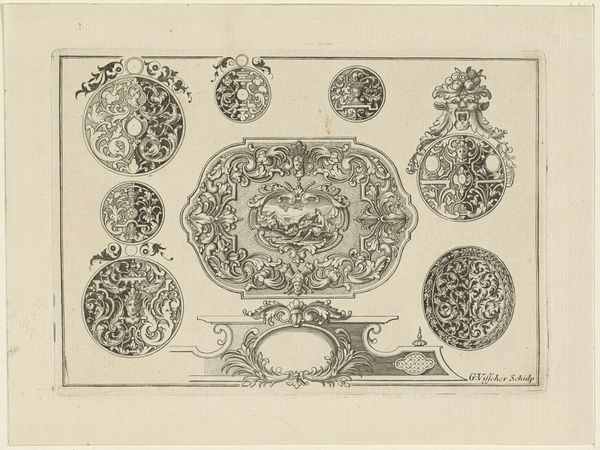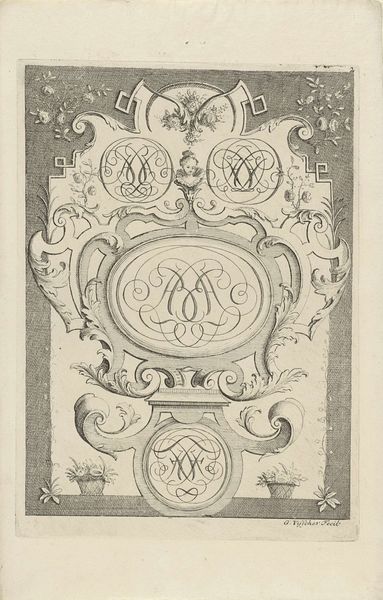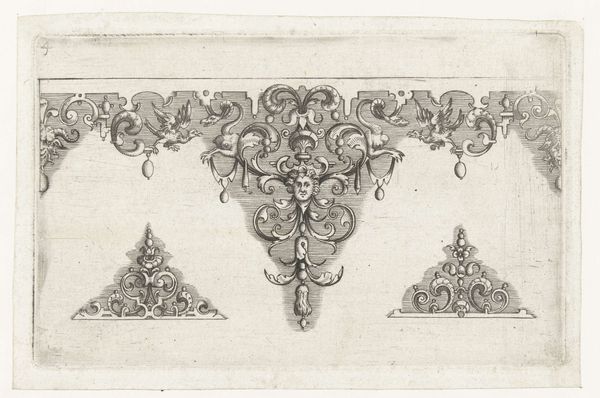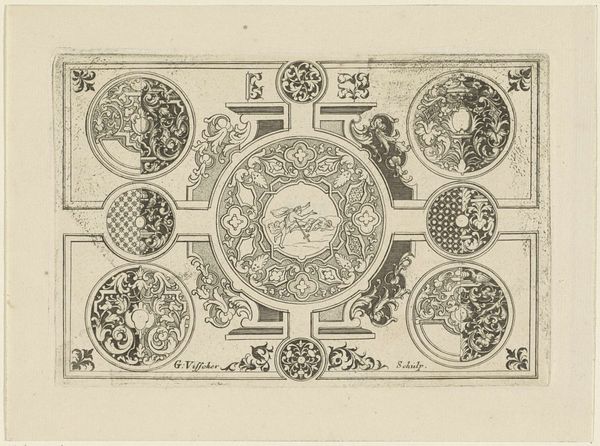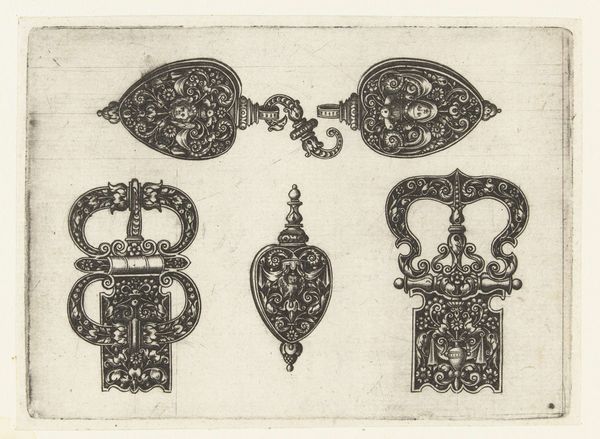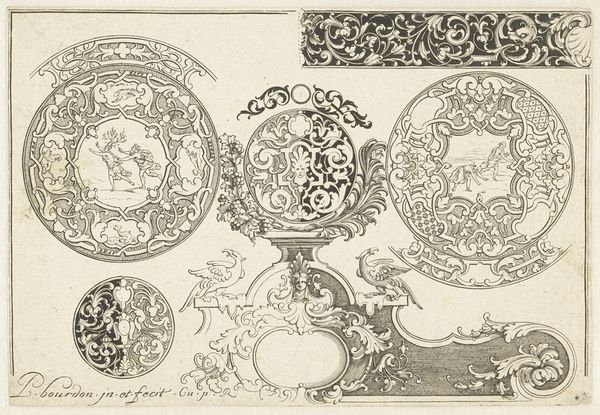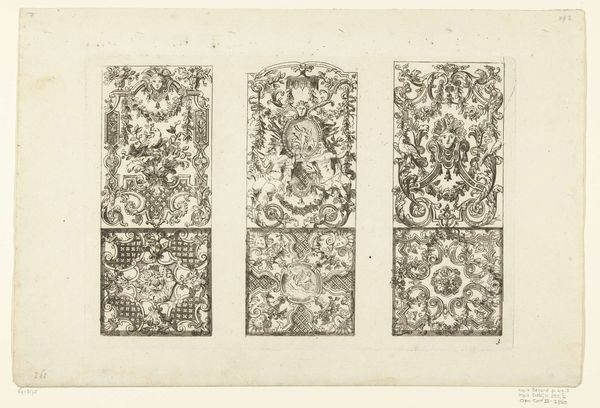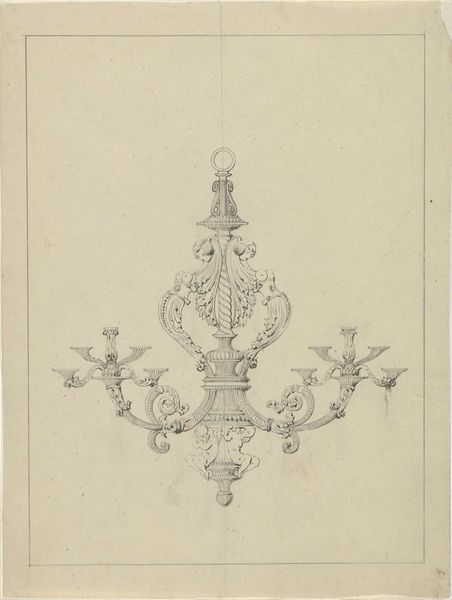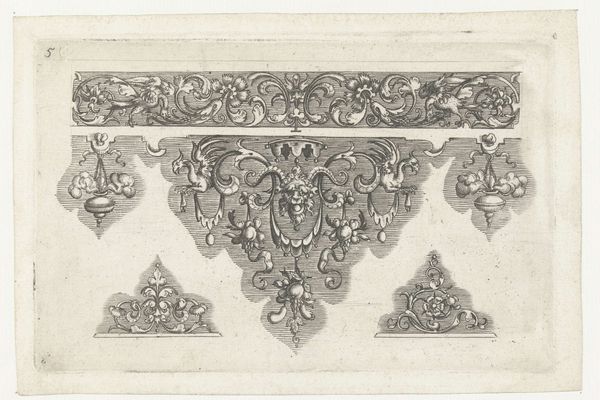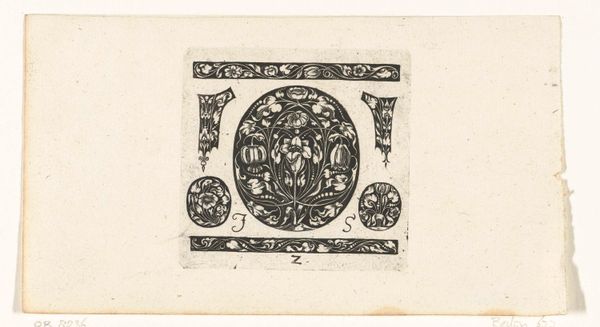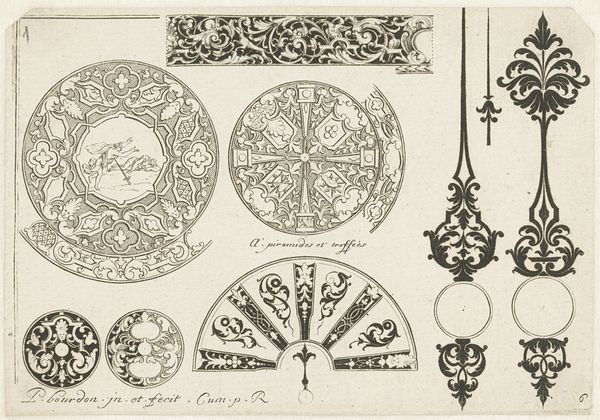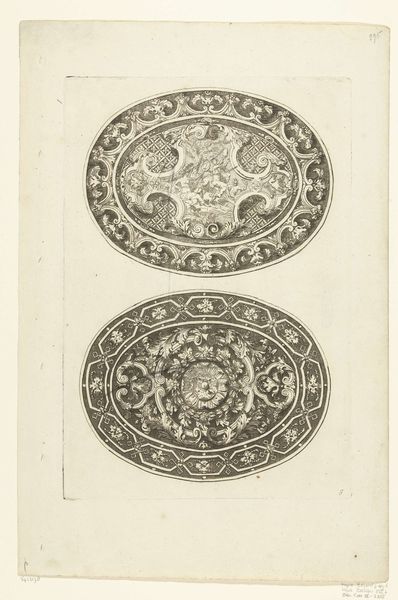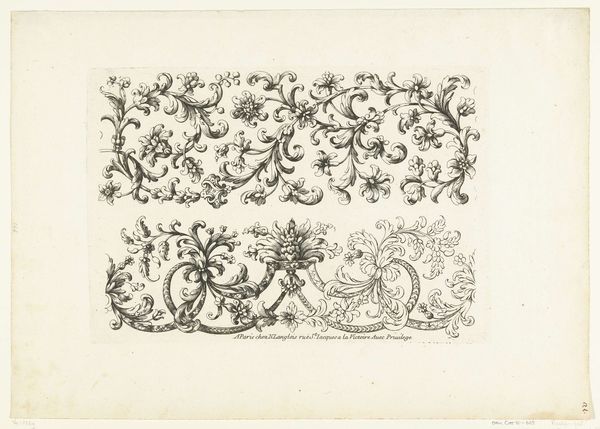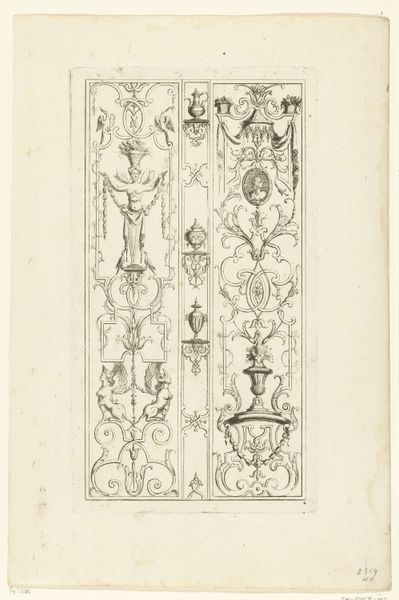
Ornament met Aeneas die zijn vader redt en verschillende ornamenten 1690 - 1710
0:00
0:00
drawing, ornament, ink, engraving
#
drawing
#
ornament
#
baroque
#
pen drawing
#
ink
#
engraving
Dimensions: height 118 mm, width 170 mm
Copyright: Rijks Museum: Open Domain
Curator: Here we have a drawing called "Ornament met Aeneas die zijn vader redt en verschillende ornamenten" – or "Ornament with Aeneas rescuing his father and various ornaments". It was created by Gerrit Visscher between 1690 and 1710 using pen and ink. What’s your initial take on it? Editor: It's dizzying! The level of detail packed into such a restrained monochrome palette creates a sort of Baroque anxiety—like peering into an exquisitely rendered abyss. Curator: Indeed! The entire drawing functions almost as a catalogue of possible decorative elements. Visscher's skill is undeniable. The work balances precision with this wonderfully frenetic energy that characterizes Baroque art. Think about the craftsmanship and the long hours that went into creating each delicate swirl. Editor: I keep coming back to the practical function. These aren't just whimsical doodles; they’re designs meant to be *used*. Imagine the labor that would have gone into translating these delicate drawings into metalwork. You see the echoes of consumption and class status rippling throughout. Curator: Absolutely, it invites us to consider not only the virtuosity of the artist, but the ecosystem of skilled artisans involved in creating luxury items for a specific social sphere. The central image depicting Aeneas rescuing his father anchors it in classical themes and reminds us of the importance of lineage, heroism, and tradition that those ornaments might symbolize. Editor: And the use of engraving multiplies its impact. The printmaking medium allows these designs to circulate, almost democratizing luxury – or at least making its blueprints widely available, while underscoring labor and access within emerging markets. Curator: I find myself wondering about Visscher's creative process—whether he conceived these elements individually, then collaged them into a cohesive whole. It feels so intentionally constructed, yet also gives off this sense of improvisation, like he’s channeling some otherworldly pattern-maker. Editor: It does force us to see ornament not as frivolous addition, but as a concentrated site of artistry, labor, and historical narrative. It makes me question the hierarchy that often places fine art "above" decorative craft. Curator: Well said. Visscher manages to distill so many different strands of art history into a seemingly simple drawing, giving us pause to really think about function and purpose. Editor: It certainly disrupts my comfortable art-historical boxes. I can see a world of work unfolding from a single sheet of paper, it definitely gives new depth to how you look at applied art in daily life.
Comments
No comments
Be the first to comment and join the conversation on the ultimate creative platform.
